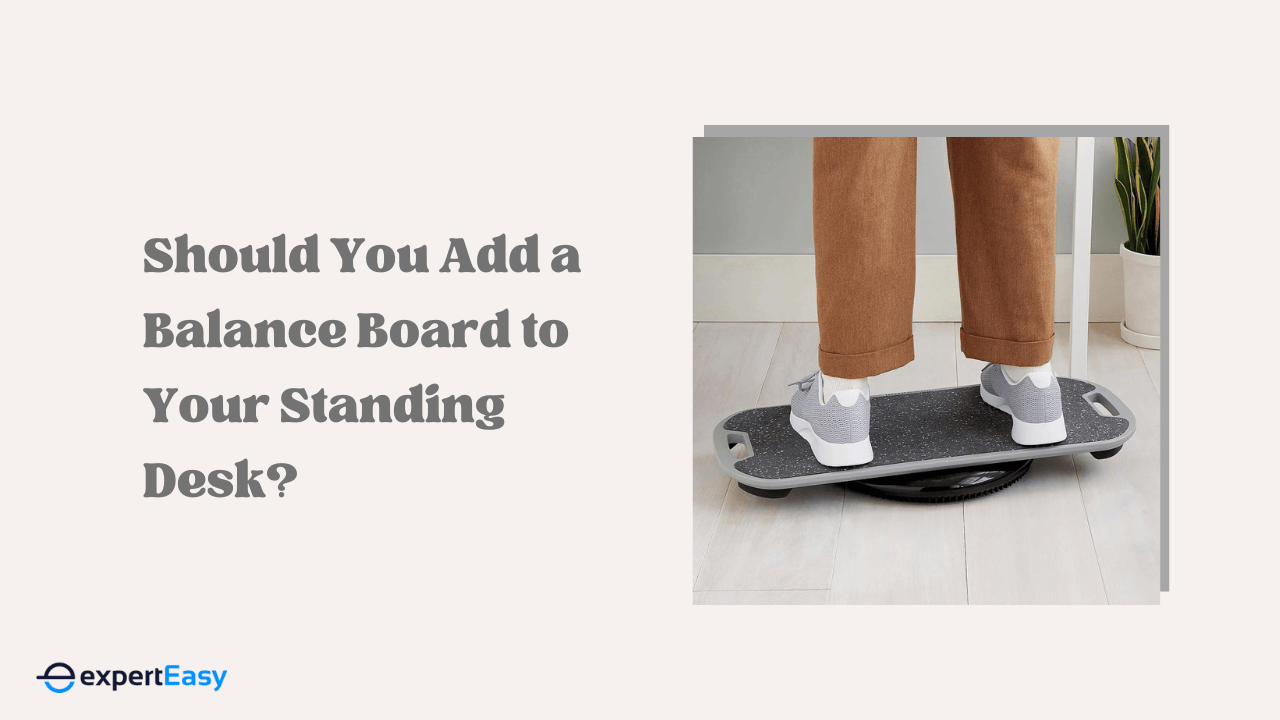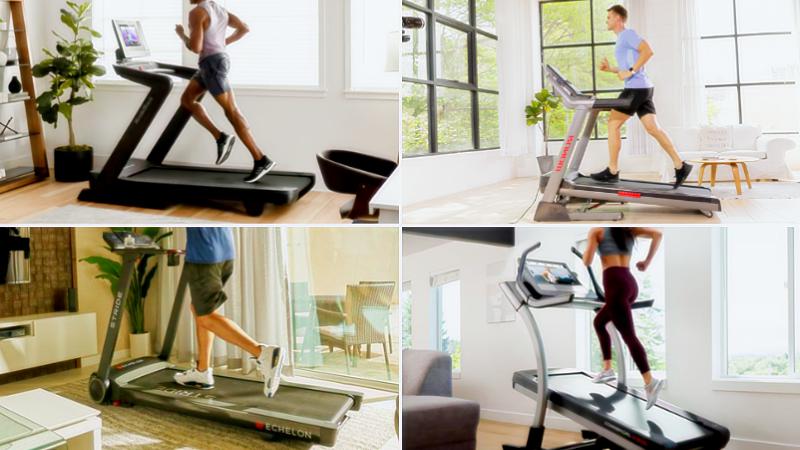Living with lower back pain can make the simplest tasks seem daunting. The pain drains your vitality and strength, proving to be an obstacle to your everyday movements. Besides this, it can also disturb your mental focus, leaving you distracted and less productive.
If you sit for work for the most part of the day, maintaining a correct sitting posture is essential to prevent exacerbating lower back pain. In this article, we will delve into the intricate relationship between sitting and lower back pain to provide you with practical advice and techniques on how to manage the pain.
What is Lower Back Pain?

Lower back pain, also known as lumbar pain, is a stiffness or muscular tension experienced in your lumbar spine, typically felt between the bottom of your back and your ribs. And while the symptoms can vary, they commonly include dull or sharp pain, stiffness, muscle spasms, limited mobility, and difficulty standing or sitting for prolonged periods.
Lower back pain can range from mild and temporary discomfort to severe and chronic pain. It may be caused by various factors, such as muscle strains, ligament sprains, herniated discs, arthritis, poor posture, and underlying medical conditions. Additionally, lifestyle factors like sedentary habits, excessive weight, and lack of exercise can contribute to the development of lower back pain.
If you are experiencing persistent or severe lower back pain, we recommend consulting a healthcare professional for a proper diagnosis and personalised treatment plan.
Why Am I Experiencing Lower Back Pain?
The lumbar spine, despite having fewer vertebrae compared to the mid-back and neck, is involved in numerous movements, which can lead to wear and tear and, consequently, injuries. Here are some common culprits:
Posture
The leading cause of pain in the lower back is usually poor posture or pandemic posture. Recent studies suggest that it’s easy to unintentionally neglect your posture when working for extended periods in a seated position. This is especially the case if your seating arrangement lacks an ergonomic office chair. Correcting your posture could be the first step towards easing your lower back pain.
Cold Weather
When the temperature dips, your tendons, and muscles may stiffen up, potentially leading to back pain. Likewise, changes in temperature and atmospheric pressure can cause swelling, intensifying discomfort. The following tips can help you alleviate the condition:
- Work out for at least 30 minutes three times weekly
- Take a stroll every day at lunch breaks and after dinner
- Stretch for a minimum of 5 minutes when walking
Excessive or Incorrect Exercise
Overdoing your workout can also result in lower back pain. This also happens when you exercise without proper technique and form. That aside, kneeling and bending awkwardly, moving large furniture, and carrying heavy things can cause pain in your lower back.
An effective way to mitigate the effects of over-exercising is the RICE procedure. RICE, in this case, refers to rest, ice, compression, and elevation.
- Rest helps prevent further injury and ensures the healing process begins.
- Ice is necessary for reducing swelling, inflammation, and pain.
- Compression helps to reduce swelling on the affected parts.
- Elevation improves blood flow and reduces excessive pressure on the injured area.
How to Sit With Lower Back Pain – Useful Tips
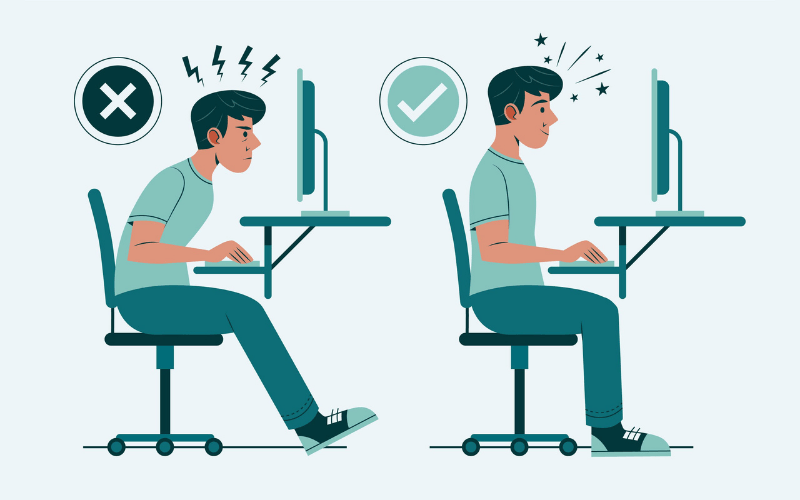
You can turn sitting with lower back pain from an uncomfortable experience into a pleasant one. Let's delve into some helpful tips that can alleviate pressure on your joints and reduce that persistent discomfort.
Tip #1 - Use an Ergonomic Chair
First off, let's talk chairs. The best ergonomic chairs can make a world of difference to your lower back, even preventing future injuries. So, what should you look for in such a chair? Key features might include:
- Seat height adjustability
- Seat pan depth adjustability
- Adjustable lumbar support
- Adjustable armrests
- High headrest or backrest for deeply reclining postures
- Slightly inclined backrest
- Soft, rounded edges
- A size that fits you
- Allows for a variety of seated postures
If your feet dangle off the ground when you sit, a footrest might be a handy addition. Remember, an ergonomic chair offers numerous health benefits, but it won't work its magic if it doesn't align with your body and your ideal sitting habits.
Lumbar Support Cushion
Lumbar support is of paramount importance in alleviating lower back pain. But not all ergonomically designed office chairs come with lumbar support. If your chair doesn’t have this essential ergonomic feature, you should consider using a small pillow or lumbar support cushion on your lower back.
Insufficient support while sitting or maintaining poor posture can lead to increased pressure on the spinal discs, muscles, and ligaments, resulting in discomfort and pain. Using lumbar support maintains the natural curve of the lower back, distributes weight evenly, and reduces strain on the structures supporting the spine.
Adjustable Backrest Angle
By providing the option to tilt and adjust the backrest, anyone suffering from lower back pain can find a position that supports the natural curvature of their spine, reducing strain on the lower back. A proper backrest angle promotes a more ergonomic sitting posture, distributing the body's weight evenly and helping to maintain the spine's neutral alignment. This, in turn, minimises pressure on the intervertebral discs and surrounding structures, preventing discomfort and potential injuries.
Adjustable Seat Depth and Width
Adjustable seat depth and width play a crucial role in addressing lower back pain through personalised support and comfort. The ability to customise the seat depth means individuals can maintain proper posture, ensuring that their lower back receives adequate support without unnecessary pressure on the lumbar region.
Seat width adjustment also offers lower back pain chair users the opportunity to achieve an optimal fit that supports their hips and thighs, promoting healthy alignment of the spine. These adjustable features enhance ergonomic support and help distribute body weight evenly to reduce strain on the lower back.
Adjustable Height and Armrests
Height-adjustable chairs ensure that your feet rest flat on the floor, thus, maintaining a proper sitting posture that supports the natural curve of the lower back. This reduces strain on the lumbar region and minimises the risk of developing discomfort or pain.
Similarly, adjustable armrests allow you to position your arms comfortably, preventing slouching or hunching over, which can contribute to lower back strain. Use our standing desk and office chair height calculator to find the best range for your ergonomic chair based on your height.
Tip #2 - Get Your Sitting Angles Right
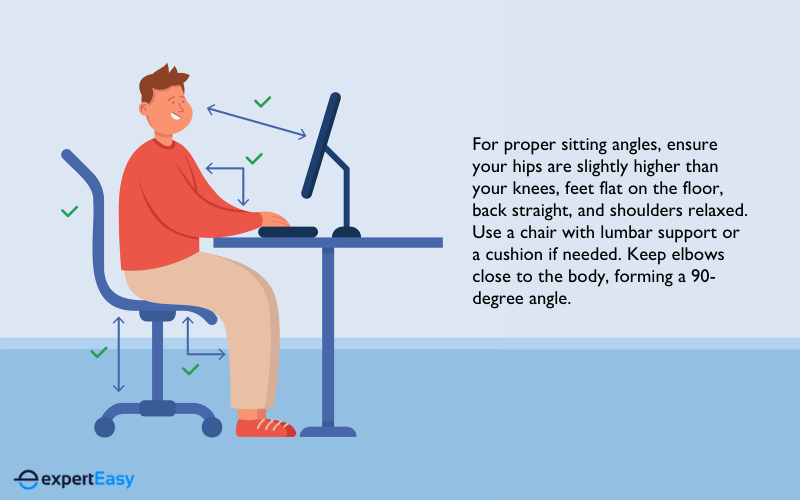
Maintaining the correct posture helps alleviate pain in the lower back. The two most important positions are the knee angle and back angle. Here are reliable tips for getting the posture right:
Alignment
Squeeze your stomach inwards to contract your deep abdominal muscles. Lean forward onto your feet and slightly stick out your bottom to maintain the natural curve in your lower back. Then bend your legs to squat down, and your eyes should be looking forward. Reverse this movement to stand up from the seated position.
Neutral Neck
Position your computer monitor at eye level to prevent straining your eyes and neck. The top of the monitor should align with or be slightly below your eye level, ensuring your head, neck, and torso are in line.
It's also best to have the monitor directly in front of you to prevent turning to the side, which can lead to neck stiffness and back pain. If your desktop is not adjustable to that effect, consider monitor stands or arms.
Relaxed Shoulders
Ensure your head is centred over your shoulders and not dropping forward. Allow your shoulders to relax and your arms to rest at your sides comfortably and naturally. Also, inhale deeply and exhale gradually to promote relaxation.
Reclined Angle
Slightly reclining your ergonomic chair at least once every hour can be highly beneficial for your lower back health. When you sit in an upright position for extended periods, it puts more pressure on the discs in your lower back. Over time, this increased pressure can lead to discomfort and strain on the lumbar region.
Reclining the chair, even just a few degrees, helps distribute the weight more evenly across your back and reduces the compression on the spinal discs. It also promotes a more natural curve in your lower back, known as the lumbar lordosis, which helps support the spine's natural alignment.
Proper Seat Height
Good posture is encouraged by proper seat height. The most appropriate seat height ranges from 40 to 50 cm. The seat height shouldn’t be too high because this will force your lower back muscles to support your upper body, worsening the pain in your lumbar spine.
Tip #3 - Apply Heat or Cold Therapy
Another strategy to ease lower back pain while sitting is applying heat or cold therapy. A cold or heat pack can help alleviate soreness and discomfort when sitting with lower back pain. A cold pack is suitable for reducing inflammation, whereas a heat pad is ideal for relaxing your muscles.
However, we recommend consulting with your physician before applying temperature therapies. Regardless, cold or heat packs may not be suitable if you have:
- Cold sensitivity
- Scar tissue
- Heart conditions
- History of cancer
- Skin conditions
- Raynaud’s disease
- Poor circulation
- Peripheral vascular disease
Tip #4 - Standing from Sitting Position
In addition to adopting a proper sitting posture, there's also an improved technique for standing up from a seated position, which can be beneficial if you experience back pain:
- Move to the edge of the seat to position yourself.
- Create a stable base by spreading your feet apart.
- Place one leg slightly back to gain leverage.
- If your chair has armrests, use them for support, shifting your weight to your legs.
- To rise, lean forward slightly and engage your leg muscles to lift your body.
- Avoid bending at the waist or relying on your back muscles.
- After standing up, relieve tension in your back by performing a few gentle back bends.
To observe a demonstration of these techniques, you can watch the video provided below.
Tip #5 - Incorporate a Good Diet and Exercise
A healthy diet that’s rich in anti-inflammatory foods can help ease discomfort in your lower back. Foods that are good for fighting inflammation include:
- Cruciferous vegetables
- Leafy greens
- Berries
- Healthy fats
- Nuts and seeds
- Fatty fish, such as mackerel and salmon
Avoid pro-inflammatory foods that can increase risks of inflammation like foods high in trans and saturated fats, fried foods, refined sugars, and processed foods. Also, remember to stay hydrated by drinking enough water during the day. This can help improve your joint health.
Tip #6 - Beneficial Stretches and Exercises
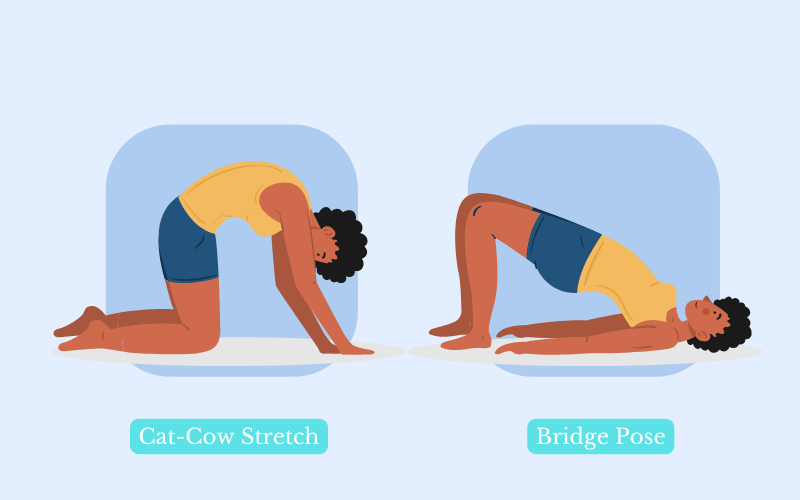
Perform these stretches and exercises regularly and gently (without force) to maintain good posture and stay active for back pain relief and overall back health:
- Cat-Cow Stretch: Start on your hands and knees in a tabletop position. Inhale as you arch your back, lifting your head and tailbone (Cow Pose). Exhale as you round your back, tucking your chin and tailbone (Cat Pose). Repeat this movement slowly, focusing on the stretch and flexion of your spine.
- Child's Pose: From a kneeling position, sit back on your heels and extend your arms forward on the floor. Lower your chest towards the ground while stretching your arms out. This stretch helps release tension in the lower back and promotes relaxation.
- Seated Forward Bend: Sit with your legs extended in front of you. Slowly hinge at the hips and reach forward towards your toes. Keep your back straight and avoid rounding the spine. This stretch targets the hamstrings and lower back.
- Pelvic Tilt: Lie on your back with your knees bent and feet flat on the floor. Gently tilt your pelvis backward, pressing your lower back into the floor. Hold for a few seconds and release. This exercise helps strengthen the abdominal muscles and supports the lower back.
- Bridge Pose: Lie on your back with your knees bent and feet flat on the floor, hip-width apart. Press through your heels to lift your hips off the ground while engaging your glutes and core. Hold at the top for a few breaths before slowly lowering back down. This exercise helps strengthen the back, glutes, and hamstrings.
- Knee-to-Chest Stretch: Lie on your back and bring one knee towards your chest, holding it with both hands. Keep your other leg extended or bent. Hold the stretch for about 20-30 seconds and switch legs. This stretch helps release tension in the lower back and hips.
Best Position for Lower Back Pain: Sitting vs. Standing
Sitting or standing with lower back pain depends on several factors, including the cause, severity of the pain, individual preferences, and comfort levels. Thus, there is no one-size-fits-all answer.
Sitting:
For some, sitting may provide relief, especially when done with proper ergonomics. That is, sitting in a chair with good lumbar support, maintaining a neutral spine, and taking regular breaks to stand and stretch can be helpful. However, sitting for prolonged periods without proper support or in a slouched position can exacerbate back pain.
Standing:
Standing or using height-adjustable desks can be advantageous for individuals with lower back pain as it helps alleviate pressure on the lumbar region and encourages a natural curve in the spine, reducing strain. However, it's crucial to avoid prolonged standing without breaks and maintain proper posture to prevent potential discomfort in the lower back, legs, or feet.
The key is to find a balance between sitting and standing and incorporating movement and regular breaks into both positions. Alternating between sitting and standing throughout the day, along with gentle stretching and strengthening exercises, can help reduce strain on the lower back and improve overall comfort.
If you experience persistent or severe lower back pain, it's essential to consult with a healthcare professional or a qualified ergonomics expert for personalised advice on finding the most suitable sitting and standing practices for your specific condition.
Frequently Asked Questions (FAQs)
Here are some frequently asked questions about sitting with lower back pain.
Is it better to sit or lay down with lower back pain?
Choosing between sitting and lying down when dealing with lower back pain really depends on the specific conditions of your pain. If done correctly, both can provide relief. Lying down can help to distribute your weight evenly, taking pressure off your spine. However, it's important not to stay in one position for too long, as this can lead to stiffness and increased pain. If you need to sit, ensure you have a well-supportive chair and maintain a good posture to avoid exacerbating your discomfort.
Does sitting worsen lower back pain?
Sitting, especially for prolonged periods, can indeed exacerbate lower back pain. This is primarily because sitting can put more pressure on your spine compared to standing or walking. It's especially problematic if you're sitting with poor posture or in an unsupportive chair. Taking regular breaks to stand or walk, maintaining good posture, and using an ergonomically designed chair can help to mitigate these effects.
How can I protect my lower back while sitting?
To protect your lower back while sitting, make sure your workspace is set up ergonomically - your chair should be supportive, with your feet flat on the ground and your monitor at eye level to avoid straining your neck. Secondly, maintaining good posture is vital - sit up straight and avoid slouching or leaning forward. Finally, take regular breaks to move and stretch.
The Bottom Line
While it's typically best to avoid sitting for prolonged periods, especially with lower back pain, there are times when we simply have to take a seat. It can certainly be challenging, but with the right approach, it's possible to sit without exacerbating pain. Easier said than done, you might think, but believe me, it's achievable with the right tools and mindfulness.
A well-designed ergonomic chair should be your first ally in this mission. When choosing an office chair, take a moment to consider your specific needs, and remember that there’s a world of difference between merely sitting and sitting while working. Combining this with the techniques provided and a good dose of self-discipline can help you conquer your sitting challenges.
But if, regardless, sitting still feels like climbing Mount Everest, do not hesitate to seek medical advice. Consult with a specialist who can guide you more specifically according to your unique situation.





